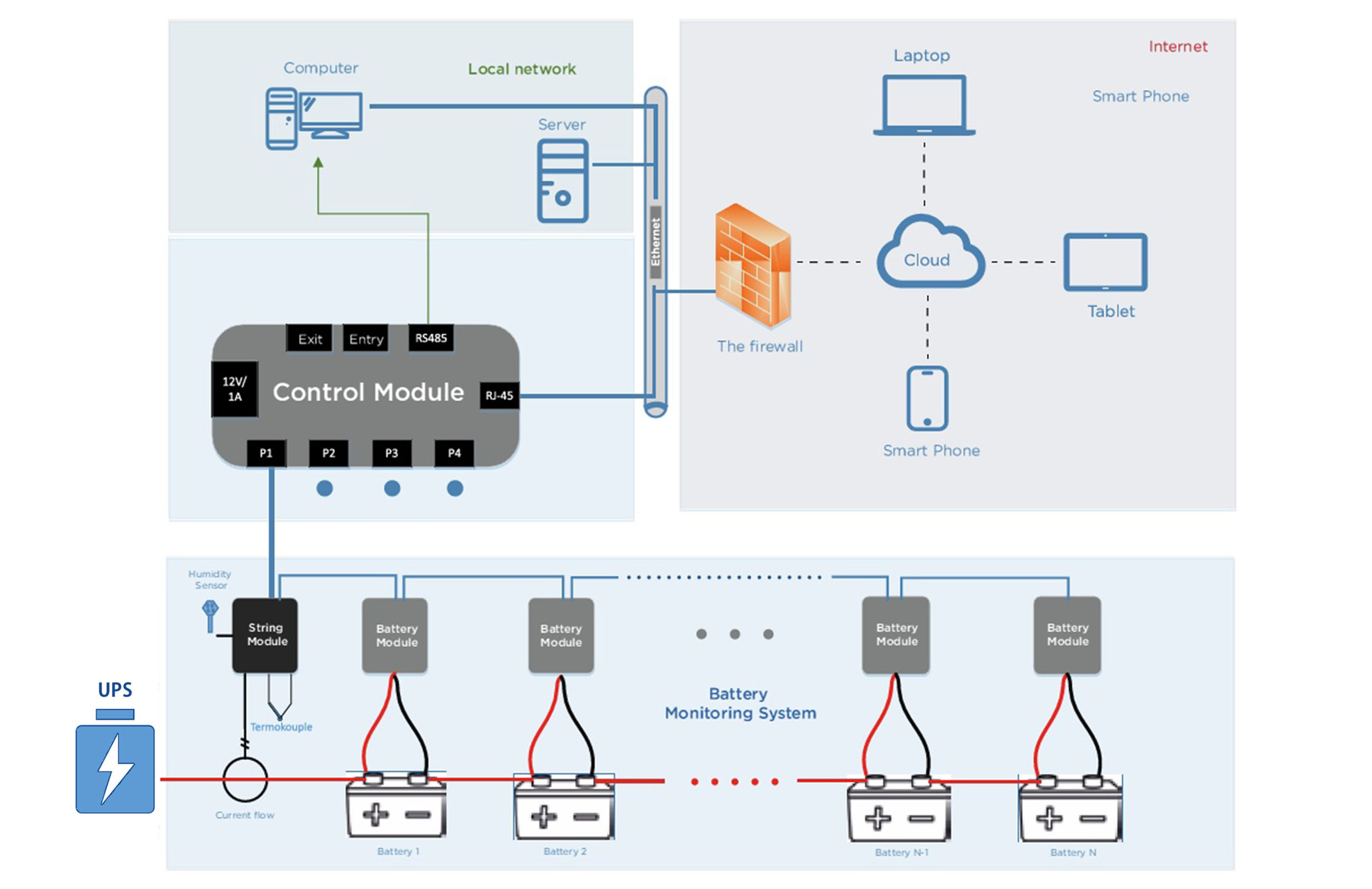Battery Monitoring System
The Control Unit is located in the center of the battery monitoring system and provides with its integrated hardware and software an entire solution to track an infinite number of batteries. Battery monitoring system offers the full use of battery-generated backup power infrastructure, thus ensuring that companies take advantage of the battery investment.

Battery Monitoring System Overview
Functions Of Battery Monitoring System
- Make informed decisions using accurate information that is automatically captured and consistently reported.
- Reduce maintenance and replacement costs by monitoring and performing preventative maintenance.
- Save time by having remote access to battery data and pinpointing faults to specific individual batteries.
- Maintain security and overall systems integrity by limiting access to sensitive areas for external service providers.
Key Benefits of Battery Monitoring System
- Avoid costly downtime and protect your business from losses.
- Optimize battery life by replacing batteries at the correct time.
- Improve safety by reducing the need for physical contact with the battery bank.
- 24/7 alarm notifications allow you or your service team to respond quickly to potential battery issues.




